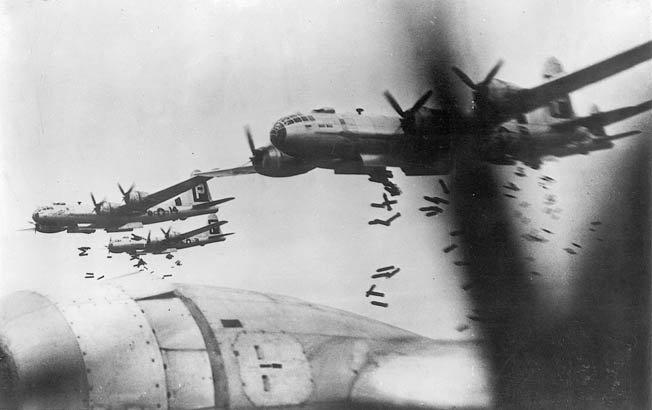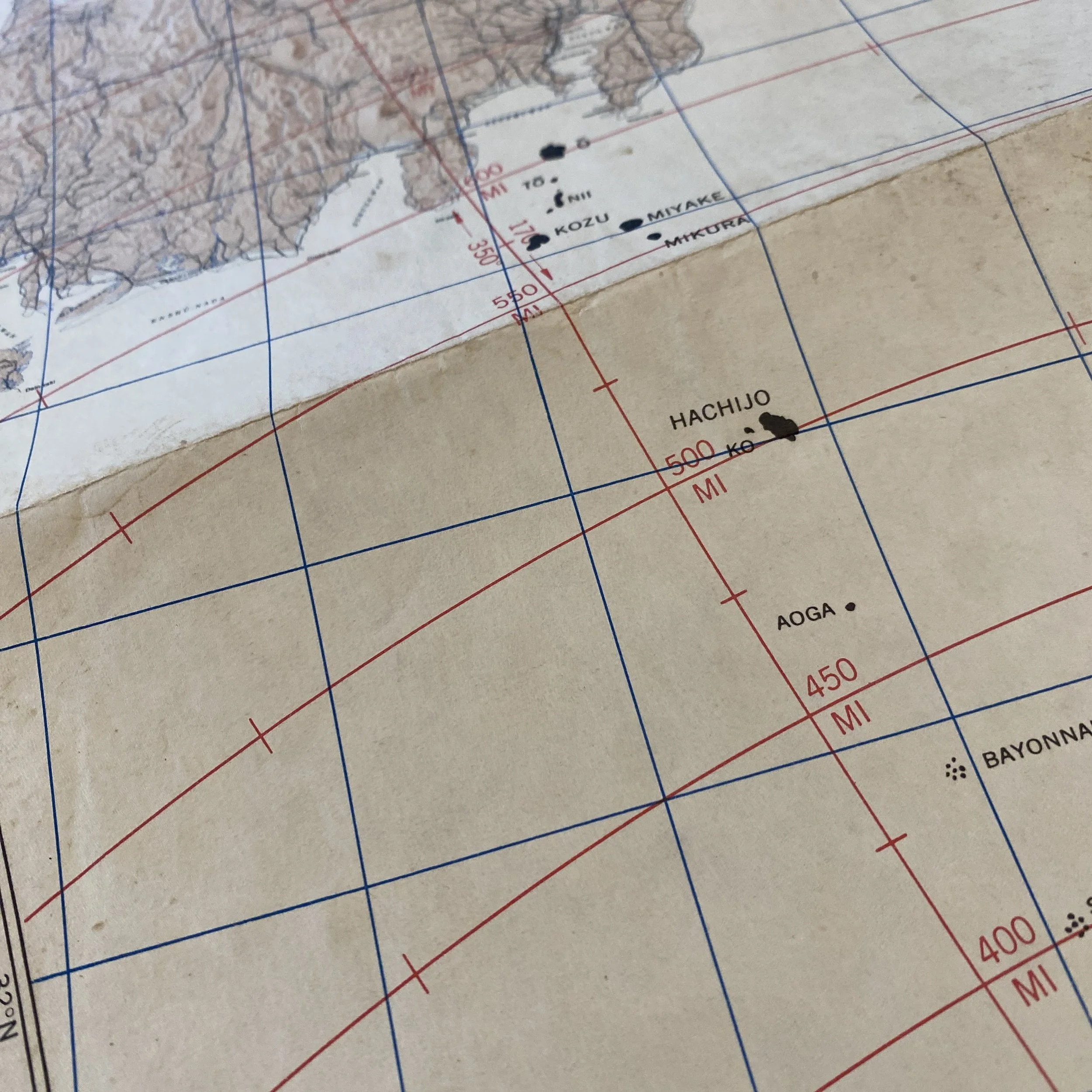VERY RARE! WWII 1945 US Air Force B-29 Iwo Jima to Japan Targets Long-range Bombers Aerial Mission Navigation Map































VERY RARE! WWII 1945 US Air Force B-29 Iwo Jima to Japan Targets Long-range Bombers Aerial Mission Navigation Map
Comes with a hand-signed C.O.A.
“In all, 2,251 B-29 landings on Iwo Jima were recorded during the war, including 1,191 fighter escorts and 3,081 strike sorties were flown from Iwo Jima against Japan”
This incredibly rare and museum-grade artifact is an original World War II double-sided U.S.A.F. Iwo Jima and mainland Japan B-29 Superfortress aerial navigation map. Dated March 1945, this B-29 mission map was printed following Operation Detachment (Battle of Iwo Jima) which took place from February 19th, 1945 to March 26th, 1945.
This very rare navigation mission map was used by USAAF long-range bombers on aerial missions from Iwo Jima to mainland Japan. This map was used to guide B-29 bombers to their targets with exact specifications of their miles to and from the mission target. This specific map was used on aerial missions from Iwo Jima to target TOKYO, OSAKA, KYOTO, and NAGOYA in 1945 during the strategic US bombing campaign on mainland Japan and Tokyo.
Iwo Jima in American hands produced immediate and highly visible benefits to the strategic bombing campaign. Marines fighting on the island were reminded of this mission time and again as crippled B-29 Superfortresses landed after bombing Japan. The capture of Iwo Jima served to increase the operating range, payload, and survival rate of the big bombers. The monthly tonnage of high explosives dropped on Imperial Japan by B-29s based in the Mariana Islands increased eleven-fold in March alone.
Nearly every day until the end of World War II, crippled bombers landed on Iwo Jima's airfields. The importance of the island hit its peak on June 7, 1945, when 102 B-29s landed on Iwo Jima and then again when 186 bombers landed on the island on July 24, 1945.
By war's end, a total of 2,451 B-29s made forced landings on the island. This figure represented an estimated 26,961 flight crewmen, many of whom would have perished at sea without the availability of Iwo Jima as a safe landing strip. One B-29 pilot said, "Whenever I land on this island I thank God for the men who fought for it."
The "emergency landing" thesis counts every B-29 landing on Iwo Jima as an emergency and asserts that capturing the island saved the lives of the nearly 25,000 crewmen of all 2,251 planes (2,148 B-29 crewmen were killed in combat during the entire war in all theaters). However, of the nearly 2,000 B-29s which landed from May–July 1945, more than 80% were for routine refueling. Several hundred landings were made for training purposes, and most of the remainder were for relatively minor engine maintenance. During June 1945 which saw the largest number of landings, none of the more than 800 B-29s that landed on the island did so because of combat damage. Of the aircraft that would have been lost without being able to land, air-sea rescue figures indicate that 50% of crewmen who ditched at sea survived, so even if Iwo Jima had not been taken the estimate of the supposedly potential 25,000 dead crewmen from airplanes crashing into the ocean should be dwindled down to 12,500.
The Battle of Iwo Jima
On Iwo Jima, site of a strategic air base located between the Mariana Islands and Japan, the Japanese carved out a network of underground fortifications aimed at turning the small volcanic island into a death trap for invading US Marines. When US Marine divisions invaded on February 19, 1945, planners expected a brief campaign. But for more than five weeks, Japanese forces mounted a fierce defense. The Japanese had to be rooted out of caves and other strongholds in merciless close-quarter assaults. The bloodbath horrified Allied military planners and American citizens, who feared a far greater slaughter during an invasion of Japan’s home islands.
General Tadamichi Kuribayashi, the Japanese commander on Iwo Jima, recognized that he could not defeat an American landing. Instead, he planned a long and costly defensive battle to shake American resolve to continue the war and invade the Japanese mainland. The general placed weapons to rain deadly fire on the beaches, but concentrated his forces in the northern part of the island within underground bunkers and gun positions linked by miles of tunnels. This deadly isolationist web of defenses exacted a terrible toll.
US Marines immortalized the bloodiest battles on Iwo Jima with names depicting the brutal combat. The battles included “The Meat Grinder,” where nearly 850 Marines died capturing a Japanese stronghold, and “Bloody Gorge,” where Japanese defenders made their final stand. The US landing forces suffered 6,821 killed and 19,217 wounded. Although most in the 20,000-strong Japanese garrison were draftees, they refused to surrender, fighting tenaciously until only a few hundred remained alive to be taken prisoner.